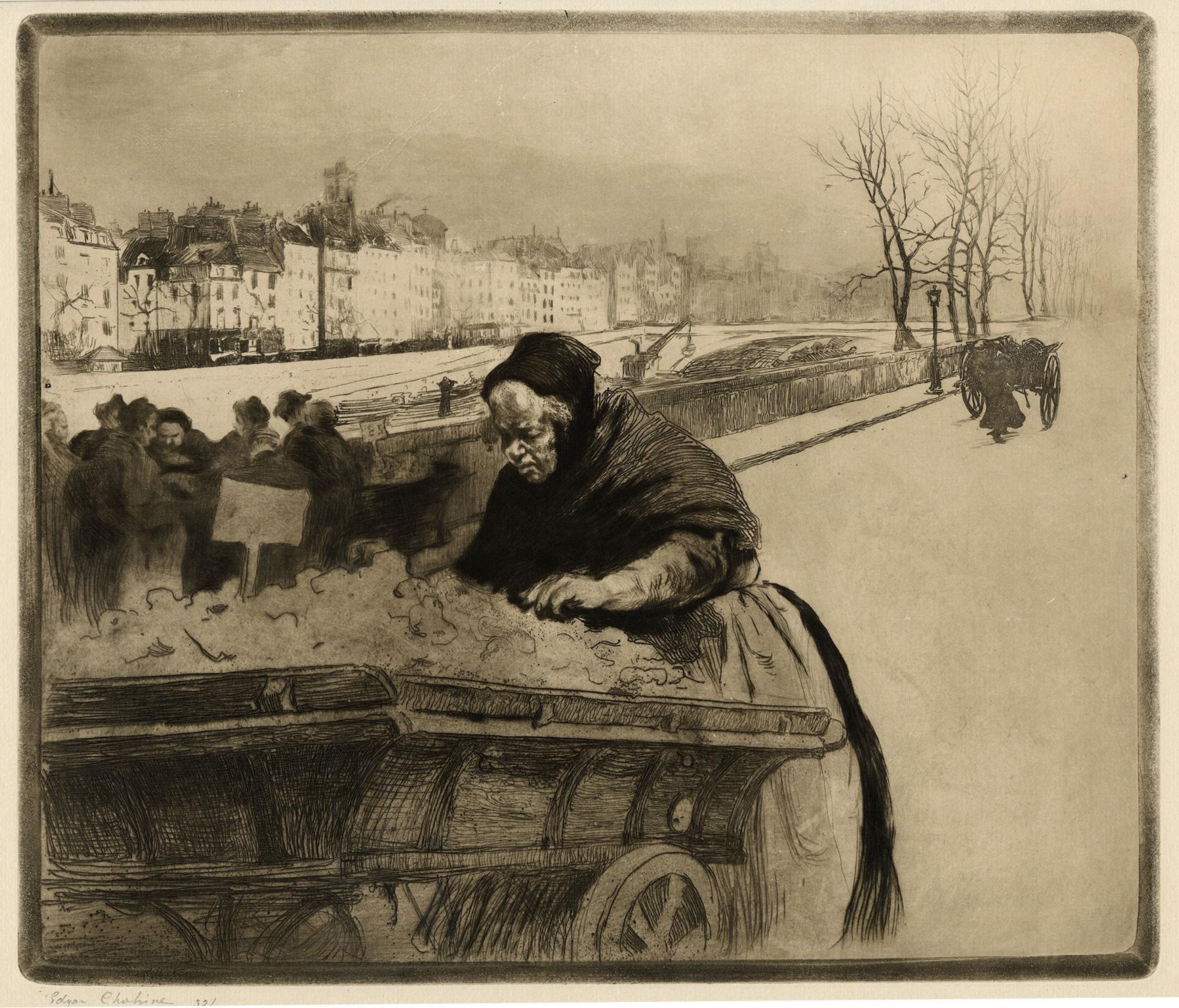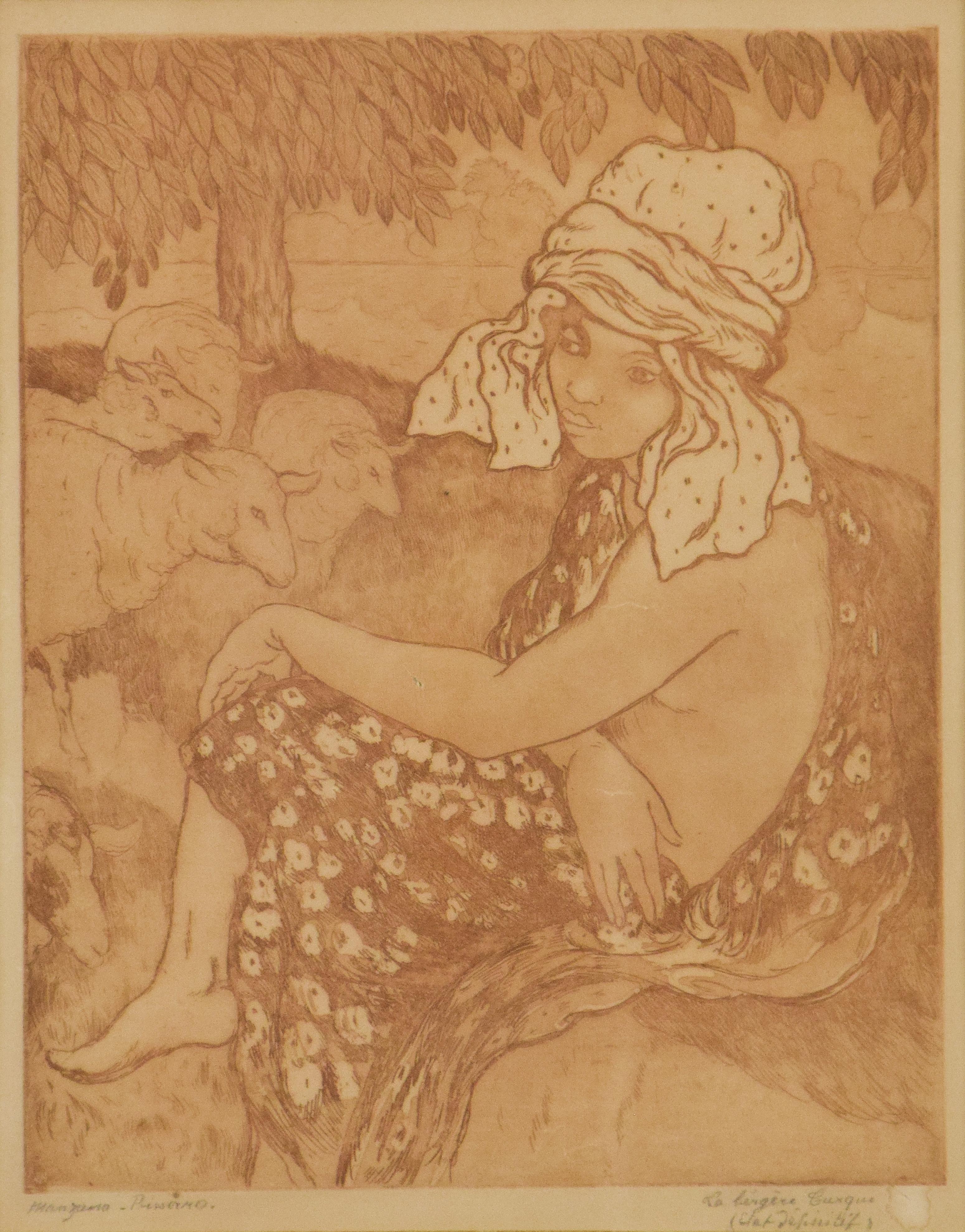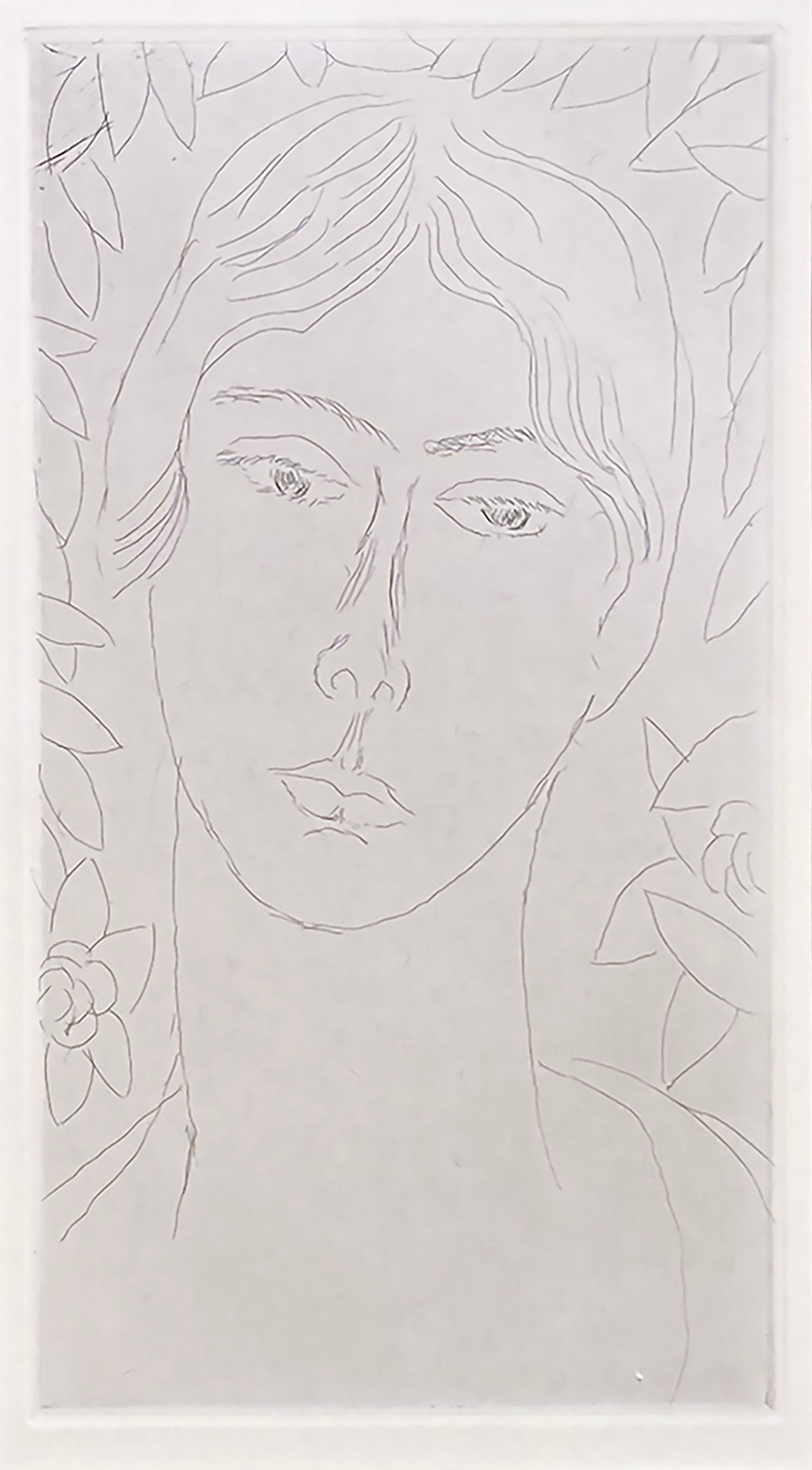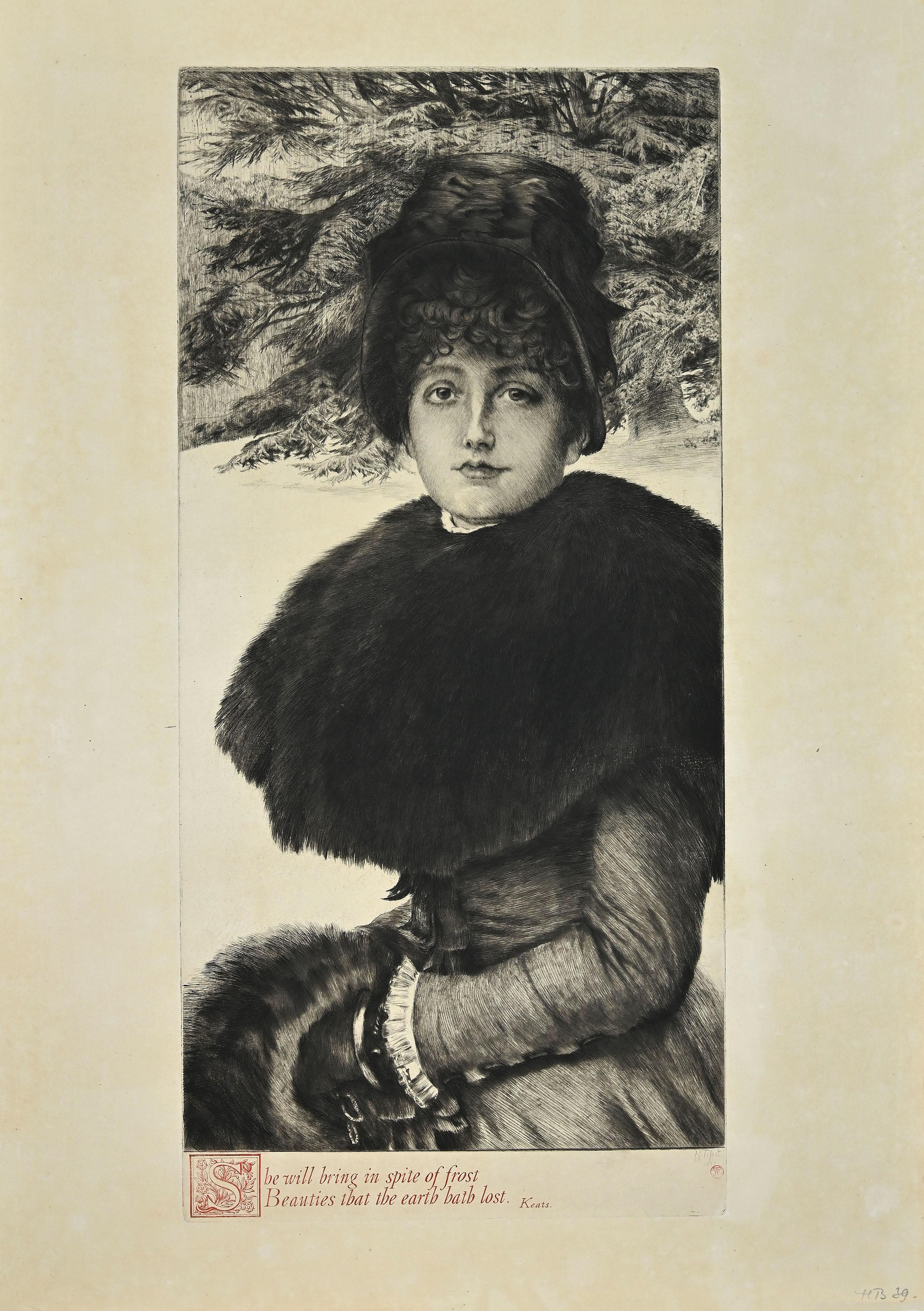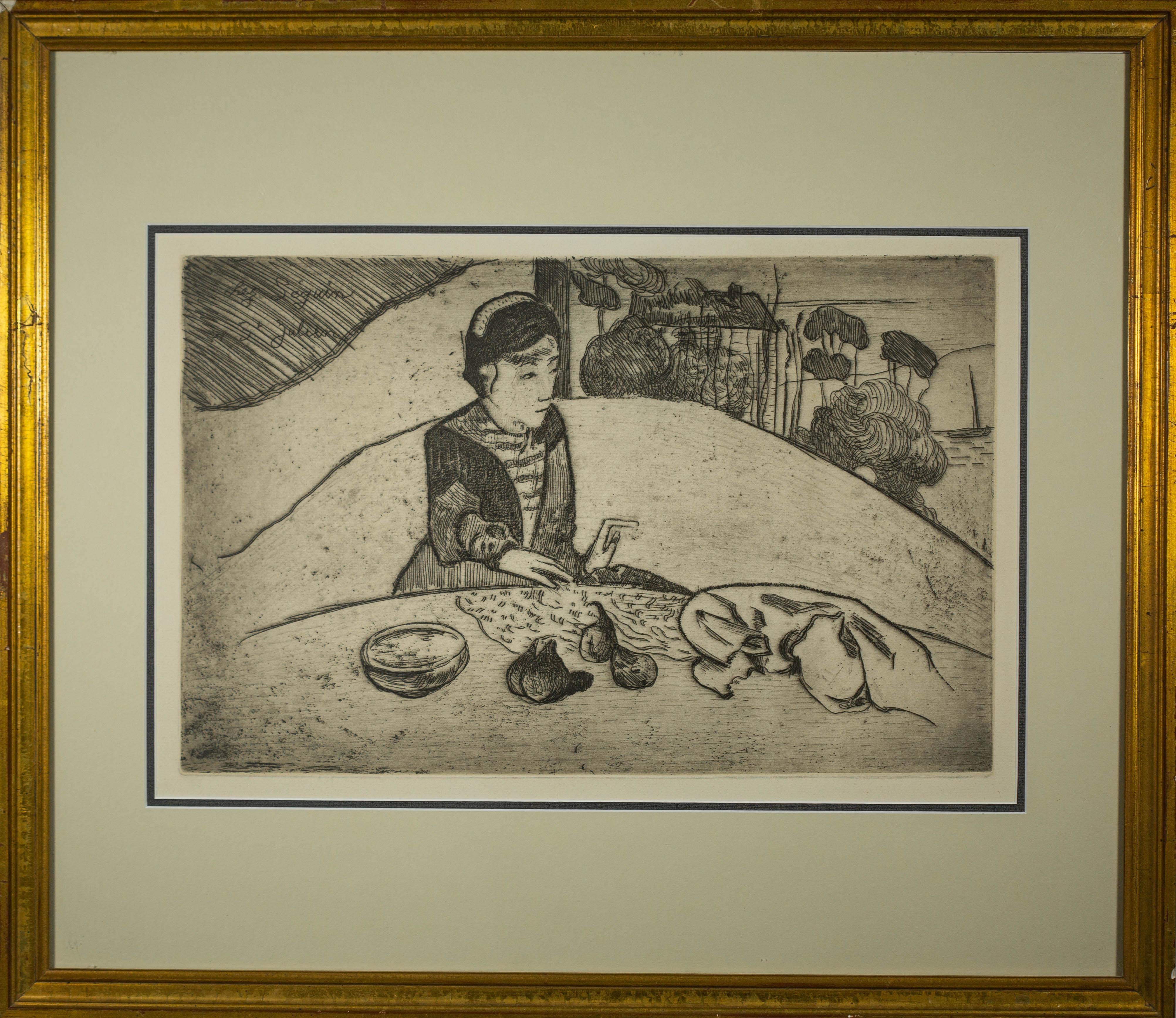Items Similar to Figure
Want more images or videos?
Request additional images or videos from the seller
1 of 6
Jacques VillonFigure1970
1970
About the Item
Hand signed and numbered. Edition of 150 prints.
Image dimensions: 15 x 11 cm
- Creator:Jacques Villon (1875-1963, French)
- Creation Year:1970
- Dimensions:Height: 7.09 in (18 cm)Width: 6.3 in (16 cm)Depth: 0.08 in (2 mm)
- Medium:
- Movement & Style:
- Period:
- Framing:Framing Options Available
- Condition:Insurance may be requested by customers as additional service, contact us for more information.
- Gallery Location:Roma, IT
- Reference Number:
About the Seller
4.9
Platinum Seller
These expertly vetted sellers are 1stDibs' most experienced sellers and are rated highest by our customers.
1stDibs seller since 2017
6,721 sales on 1stDibs
Typical response time: 2 hours
- ShippingRetrieving quote...Ships From: Roma, Italy
- Return PolicyA return for this item may be initiated within 14 days of delivery.
More From This SellerView All
- Promenade dans la Neige - Etching by J. Tissot - 1880By James TissotLocated in Roma, ITBeautiful print on verge crème, 2° state on 3, with letters printed in red. Stamp “Lugt 1545”. Little crack and fold on lower left margin of the sheet. Some small traces of oxidati...Category
1880s Post-Impressionist Portrait Prints
MaterialsDrypoint, Etching
- Femme Affranchie A' Quatorze Heures Chante Midi - Georges RouaultBy Georges RouaultLocated in Roma, ITSigned on plate. Edition of 450 prints, belonging to the suite “Miserere”, considered as the most important religious graphic work of XX century. The single prints, realized with a s...Category
1940s Post-Impressionist Figurative Prints
MaterialsEtching
- Lady in Saloon - Original Lithograph by Luc-Albert Moreau - Early 20th CenturyBy Luc-Albert MoreauLocated in Roma, ITLady in Saloon is an Original Lithograph on ivory-colored paper realized by Luc Albert Moreau. The artwork is in good condition with slight foxing. Hand-signed on the lower. Luc-...Category
Early 20th Century Post-Impressionist Figurative Prints
MaterialsLithograph
- The Whisper - Original Lithograph by Luc-Albert Moreau - Early 20th CenturyBy Luc-Albert MoreauLocated in Roma, ITThe whisper is an Original Lithograph on ivory-colored paper realized by Luc Albert Moreau. The artwork is in good condition. Hand-signed on the lower. Luc-Albert Moreau (1882-19...Category
Early 20th Century Post-Impressionist Portrait Prints
MaterialsLithograph
- Two Women - Original Lithograph by Luc-Albert Moreau - Early 20th CenturyBy Luc-Albert MoreauLocated in Roma, ITTwo Women is an Original Lithograph on ivory-colored paper realized by Luc Albert Moreau. The artwork is in good condition. Hand-signed on the lower. Luc-Albert Moreau (1882-1948...Category
Early 20th Century Post-Impressionist Figurative Prints
MaterialsLithograph
- Lady in Saloon - Original Lithograph by Luc-Albert Moreau - Early 20th CenturyBy Luc-Albert MoreauLocated in Roma, ITLady in Saloon is an Original Lithograph on ivory-colored paper realized by Luc Albert Moreau. The artwork is in good condition. Hand-signed on the lower. Luc-Albert Moreau (1882...Category
Early 20th Century Post-Impressionist Figurative Prints
MaterialsLithograph
You May Also Like
- La Marchande des Quatres-SaisonsBy Edgar ChahineLocated in Middletown, NYEtching with drypoint on cream wove paper, 11 3/4 x 13 3/4 inches (297 x 347 mm), full margins. Signed in pencil and numbered 32/40, lower margin. Minor mat tone and several small lo...Category
Early 20th Century Post-Impressionist Portrait Prints
MaterialsHandmade Paper, Rag Paper, Drypoint, Etching
- Print by Georges Manzana Pissarro 'La Bergère Turque' (The Turkish Shepherdess)By Georges Henri Manzana PissarroLocated in London, GB'La Bergère Turque' (The Turkish Shepherdess) by Georges Manzana Pissarro (1871-1961) Etching 33.5 x 27 cm (13 ¼ x 10 ¾ inches) Signed lower left, Manzana Pissarro, titled and inscri...Category
1920s Post-Impressionist Animal Prints
MaterialsEtching
- "Mlle Landsberg" (grade planche, pl. 16)By Henri MatisseLocated in Missouri, MO"Mlle Landsberg" (grade planche, pl. 16), 1914 Henri Matisse (French, 1869-1954) Signed and Numbered Lower Right Edition 12/15 Image size: 7 7/8 x 4 5/16 inches Sheet size: 17 11/16 x 12 1/2 inches With frame: 19 1/2 x 14 1/2 inches Henri Matisse came from a family who were of Flemish origin and lived near the Belgian border. At eight o'clock on the evening of December 31, 1869, he was born in his grandparents' home in the town of Le Cateau in the cheerless far north of France. His father was a self-made seed merchant who was a mixture of determination and tightly coiled tension. Henri had no clear idea of what he wanted to do with his life. He was a twenty-year-old law clerk convalescing from appendicitis when he first began to paint, using a box of colors given to him by his mother. Little more than a year later, in 1890, he had abandoned law and was studying art in Paris. The classes consisted of drawing from plaster casts and nude models and of copying paintings in the Louvre. He soon rebelled against the school's conservative atmosphere; he replaced the dark tones of his earliest works with brighter colors that reflected his awareness of Impressionism. Matisse was also a violinist; he took an odd pride in the notion that if his painting eye failed, he could support his family by fiddling on the streets of Paris. Henri found a girlfriend while studying art, and he fathered a daughter, Marguerite, by her in 1894. In 1898 he married another woman, Amelie Parayre. She adopted the beloved Marguerite; they eventually had two sons, Jean, a sculptor and Pierre who became an eminent art dealer. Relations between Matisse and his wife were often strained. He often dallied with other women, and they finally separated in 1939 over a model who had been hired as a companion for Mme. Matisse. She was Madame Lydia, and after Mme. Matisse left, she remained with Matisse until he died. Matisse spent the summer of 1905 working with Andre Derain in the small Mediterranean seaport of Collioure. They began using bright and dissonant colors. When they and their colleagues exhibited together, they caused a sensation. The critics and the public considered their paintings to be so crude and so roughly crafted that the group became known as Les Fauves (the wild beasts). By 1907, Matisse moved on from the concerns of Fauvism and turned his attention to studies of the human figure. He had begun to sculpt a few years earlier. In 1910, when he saw an exhibition of Islamic art, he was fascinated with the multiple patterned areas and adapted the decorative universe of the miniatures to his interiors. As a continuation of his interest in the "exotic", Matisse made extended trips to Morocco in 1912 and 1913. At the end of 1917, Matisse moved to Nice; he would spend part of each year there for the remainder of his life. A meticulous dandy, he wore a light tweed jacket amd a tie when he painted. He never used a palette, but instead squeezed his colors on to plain white kitchen dishes...Category
1910s Fauvist Figurative Prints
MaterialsEtching, Drypoint
- La Femme aux FiguresBy Paul GauguinLocated in Detroit, MIEtched print in black on cream laid paper. Excellent condition.Category
1890s Post-Impressionist Portrait Prints
MaterialsEtching
- "Dame a la Toque", fabulous drypoint etching by Paul Cesar HelleuBy Paul César HelleuLocated in Hinsdale, ILHELLEU, PAUL CÉSAR (1859 - 1927) "La Dame a la Toque" (Lady in Fur Hat) Drypoint printed in colors on pale cream wove paper, c. 1906 Signed in black crayo...Category
Early 20th Century Post-Impressionist Portrait Prints
MaterialsDrypoint
- Portrait d Souza, original lithographBy François DesnoyerLocated in Belgrade, MTThis lithograph is a limited edition, signed and numbered by the artist. It is from my private collection of mid 20th Century School of Paris artists.Category
Mid-20th Century Fauvist Portrait Prints
MaterialsLithograph
Recently Viewed
View AllMore Ways To Browse
Villon Etching
Jacques Villon Etching
Jacques Villon On Sale
Van Dyck Prints
Seaside Painting 1949
Campbell A Mellon
Pencil Earrings
Warhol Ingrid
Andy Warhol Car Poster
Picasso Femme Au Chapeau
Portrait De Femme 1982
Retro Checkered Floors
Blame Game
Bubblegum Portrait
Andy Warhol Querelle
Seneca Sculpture
Kaws Blame Game
Queen Beatrix
